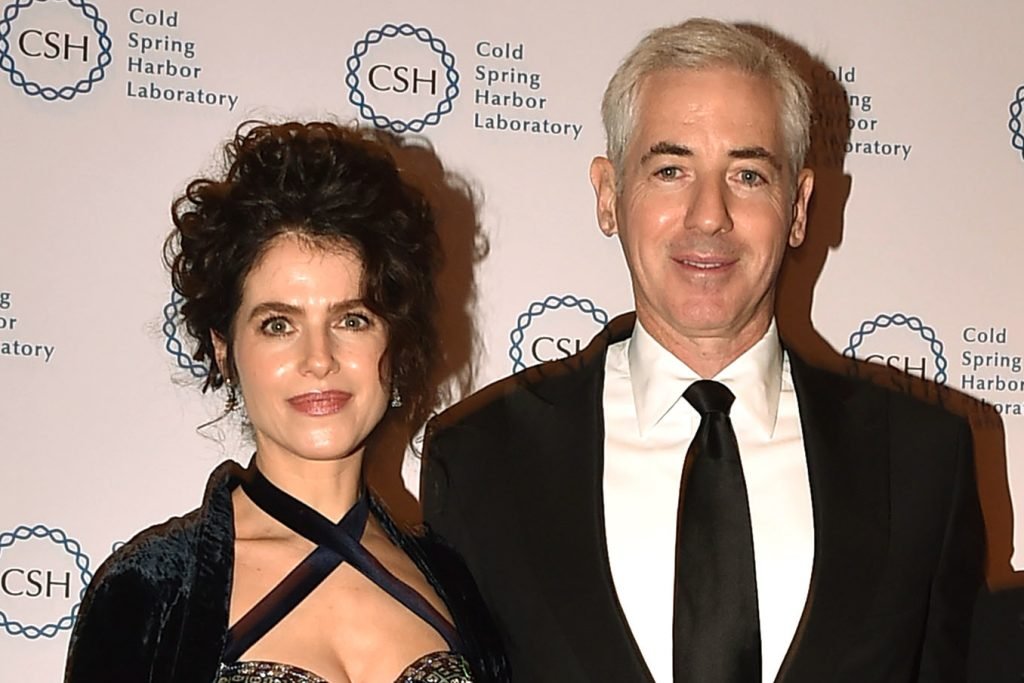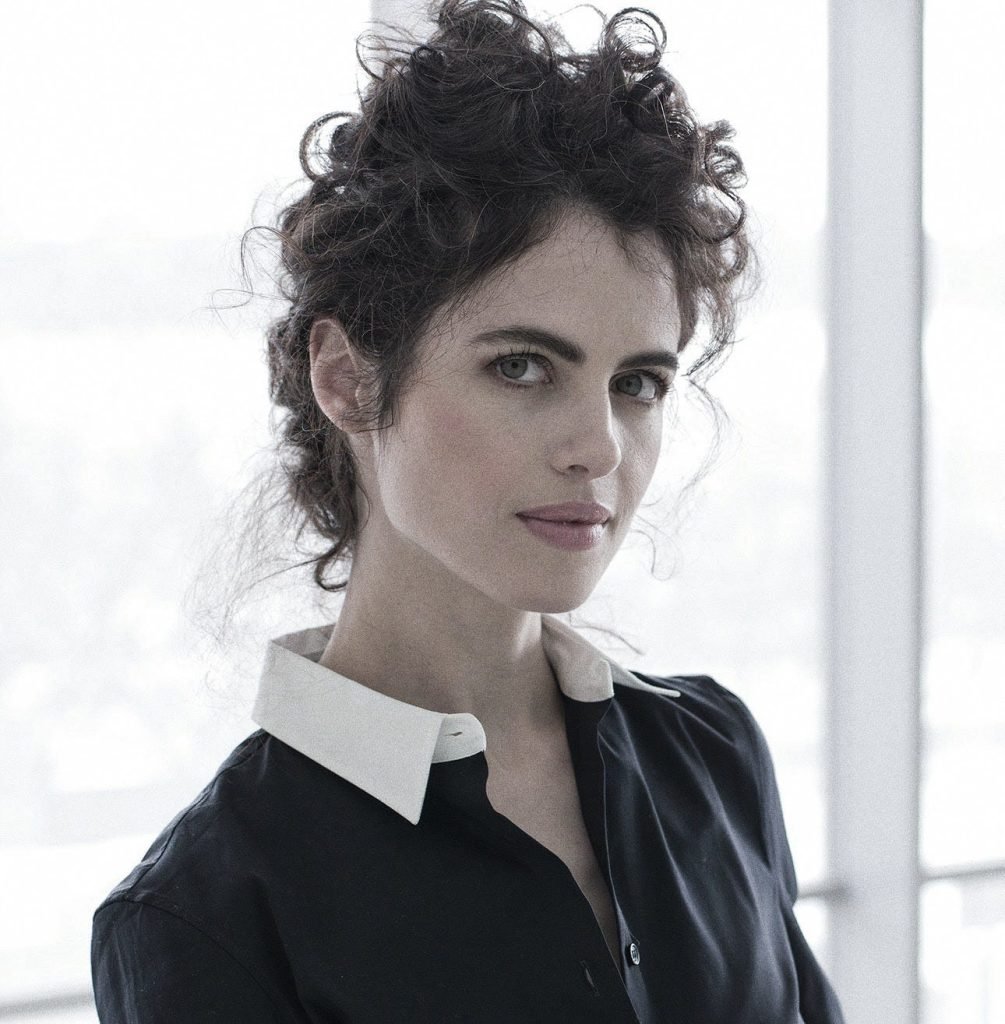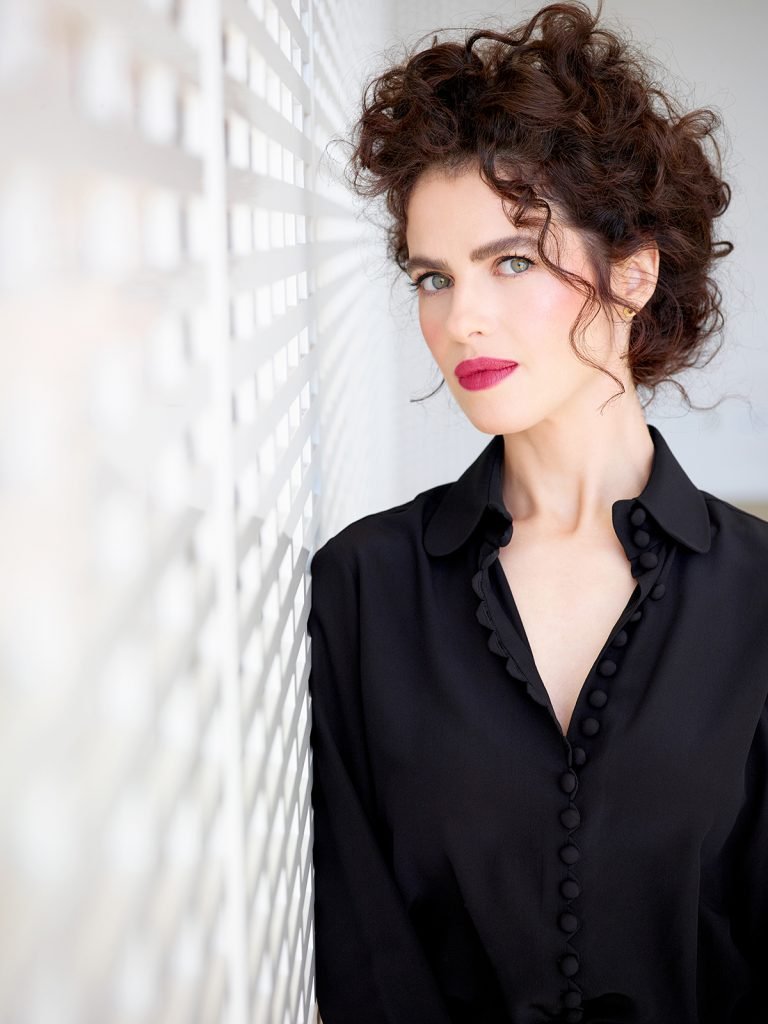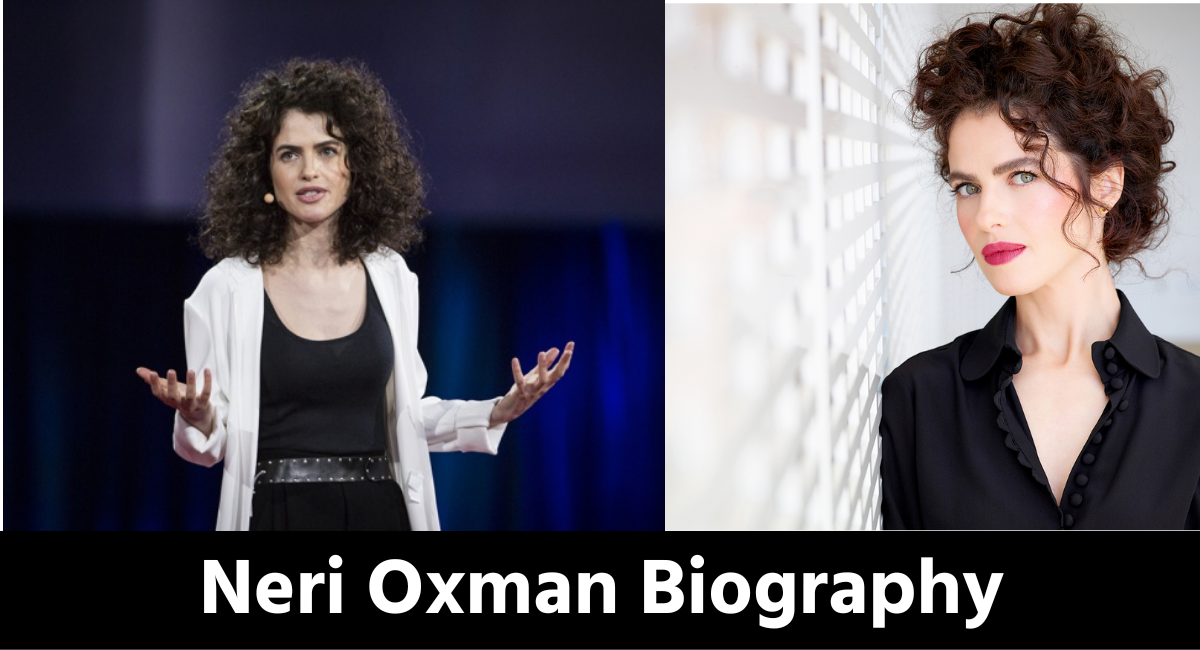Neri Oxman born February 6, 1976) is an American–Israeli designer and professor known for art and architecture that combines design, biology, computing, and materials engineering. She coined the phrase “material ecology” to define her work.
Neri Oxman Facts
- Born :February 6, 1976Haifa, Israel
- Nationality : Israeli, American
- Education: Hebrew University of JerusalemIsrael Institute of Technology
- Occupation(s) : Professor of media arts and science
- Children : 1
- Parent: Rivka Oxman (mother)
- Doctoral : advisor William J. Mitchell
Neri Oxman Early life and education
Neri Oxman was born in Haifa, Israel, the daughter of architecture professors Robert and Rivka Oxman.Her sister Keren, is an artist Oxman grew up in Israel, spending time in her parents’ architecture studio and at her grandmother’s house, which she said “cultivated in me a sense of wonder.”
After graduating from the Hebrew Reali School in Haifa in 1993, she served two years in the Israeli Air Force, reaching the rank of first lieutenant. Following her military service, she attended Hebrew University’s Hadassah Medical School for two years before switching her studies to architecture. She began her architectural studies at Technion Israel Institute of Technology and finished her degree at the Architectural Association School of Architecture in London, graduating in 2004In 2005, Oxman began Ph.D. studies in architectural design and computation at the Massachusetts Institute of Technology, advised by William J. Mitchell. Her thesis focused on material-aware design. She graduated from the doctoral program in 2010.
In January 2024, journalists at Business Insider reported they had uncovered instances of plagiarism in Oxman’s Ph.D. dissertation. Oxman subsequently expressed regret and apologized for the errors in her dissertation on the social media platform X. However, a second Business Insider article reported that Oxman had plagiarised entire paragraphs from Wikipedia and other sources without attribution.
Neri Oxman Personal life
Oxman was previously married to Argentine composer Osvaldo Golijov. In 2019, she married investor and hedge fund manager Bill Ackman,[24] with whom she has a daughter. They are co-trustees of the Pershing Square Foundation.
Neri Oxman Career
Oxman was the “Sony Corporation Career Development Professor and Associate Professor of Media Arts and Sciences” at the MIT Media Lab, where she founded and led the Mediated Matter research group She has had exhibitions at the Museum of Modern Art [MoMA],] Boston’s Museum of Science, SFMOMA, and the Centre Pompidou, which have her works in their permanent collections. MoMA curator Paola Antonelli called her “a person ahead of her time, not of her time and futurist Bruce Sterling called her work “shatteringly different from anything before”.
Neri Oxman In 2006, Oxman launched an interdisciplinary research project at MIT called material ecology, to experiment with generative design. She became a professor at MIT in 2010, founding the interdisciplinary Mediated Matter group at the MIT Media Lab and was awarded tenure in 2017.
Her research interests involve parametric and contextual design, including engineering techniques to realize those designs in various materials and contexts. Examples include creating a “skin” for buildings that can tan in the sun to create shade, and structural biodegradable polymers] She has published collaborations in biology, medicine, wearables, and the design of fabrication tools.
Her work has been mentioned as an inspiration for changing how materials and structures are designed. Her wearable collection was described by Andrew Bolton as “otherworldly—defined by neither time nor place” In 2016, she helped launch the open Journal of Design Science,an”antidisciplinary” journal which journal co-founder Joi Ito described as “working in spaces that simply do not fit into any existing academic discipline.” She wrote that science, engineering, design and art are connected, with the output of each serving as input for the others.

Oxman’s early projects took the form of surfaces, furniture, or objects that could be worn or put on display. Since 2013, most projects have included temporary or interactive installations, including an overview of the production processes and study of its mechanism and material properties. These include both mechanical processes, such as for Ocean Pavilion and Glass I, and biological ones, such as for Silk Pavilion and Synthetic Apiary. Exhibited works are largely in the permanent collections of museums; Silk Pavilion II was acquired by the Esquel Group in Hong Kong.
Oxman’s work is in the permanent collections of museums including New York’s Museum of Modern Art (MoMA), the San Francisco Museum of Modern Art (SFMOMA), the Museum of Applied Arts (MAK) in Vienna, the Smithsonian, and Boston’s Museum of Fine Arts and Museum of Science. In 2020, the MoMA displayed the first exhibition of her work as its own collection.
Neri Oxman In 2016, Oxman worked with Björk to create a mask based on the singer’s face, and worked with Dutch fashion designer Iris van Herpen to 3D-print a collection of wearable couture
Neri Oxman Design philosophy
Oxman’s philosophy of material ecology was developed in 2006 while a graduate student at MIT. It combines 3D printing techniques with biology, engineering, materials science, and computer science to create objects and structures through growth and without assembly. She proposed developing a material ecology with “holistic products, characterized by property gradients and multi-functionality” – placing humanity in harmony with nature, in contrast to assembly lines and “a world made of parts”.She described her work as shifting “from consuming nature as a geological resource to editing it as a biological one.” This includes using biological shapes as inspiration, textures, and even fabrication, such as the glowing bacteria in Mushtari and the silkworms in the Silk Pavilion. Antonelli described Oxman’s work as a way to “decipher nature’s myriad [design] lessons and render them digitally for future application at all scales”
Oxman has spoken and written about her philosophy and its applications to design. Her approach to form generation and environmental design is cited by rapid prototypers in other fields,[59] and her 2015 TED talk on material ecology has been viewed over 2.5 million times.In 2019, the Netflix docu-series Abstract: The Art of Design featured her work in its second season.
Neri Oxman Early works
Neri Oxman Much of Oxman’s early work focused on 3D printing related to human uses, including projects like Carpal Skin, which used the profile of pain for a person with carpal tunnel syndrome to ease their discomfort. She also produced Monocoque , a demonstration of how a printed structure could support its weight via its exterior skin rather than interior supports. This required a printer that could simultaneously print multiple materials with different structural properties, a process she named ‘variable property rapid prototyping’.
Neri Oxman Wearables
In 2012, Oxman printed a set of body-sized wearables, Imaginary Beings, inspired by legendary creatures.She also collaborated with van Herpen and materials engineer Craig Carter on Anthozoa, a cape and skirt evocative of marine life.In 2015, she designed the Wanderers collection, inspired by interplanetary exploration, in collaboration with Christoph Bader and Dominik Kolb. The collection included the Living Mushtari chestpiece, a model digestive tract filled containing a colony of microorganisms that could sustain life in harsh environments.In 2016, she produced Rottlace, a 3D-printed mask for Björk,based on a 3D scan of the performer’s face. Björk wore it in the world’s first 360° virtual reality livestream. Oxman also developed Lazarus, a project designed to capture the wearer’s last breath, and began work on Vespers, a collection of 15 death masks. The masks were divided into past, present, and future, and embedded with minerals and bacteria.

In 2014, she collaborated with Carter on Gemini, a chaise longue with a milled wood frame and 3D-printed upholstery designed for both structural and acoustical properties, designed to recreate a calming womb-like environment. It was produced with a combination of additive and subtractive printing. SFMOMA acquired the piece the next year. This work gave rise to a model for a larger scale
Neri Oxman Mediated Matter also prototyped new platforms and tools for printing. These included a printer that can print entire sections of rooms, a glass printer, and a quick-curing printer that can make free-standing objects without support structures.
Neri Oxman Glass
In 2014, they developed G3DP, the first 3D printer to produce optically transparent glass. At the time, sintering 3D printers could print with glass powder, but the results were brittle and opaque. G3DP was a collaboration with MIT’s Glass Lab and the Wyss Institute, emulating traditional glass working processes, with a kiln and annealing chamber. The process allowed close control of color, transparency, thickness and texture. Certain settings turned the printer into a “molten glass sewing machine”.Two generations of the printer, G3DP and G3DP2, produced collection of vessels that have gone on exhibit as Glass I and Glass II.A 10-foot glass and light sculpture printed by this platform,YET, was installed at
Neri Oxman Environments
Also in 2014, the group developed Aguahoja, a project involving a water-based fabrication platform that built structures out of chitosan, a curable water-soluble organic fiber similar to chitin. Structural pillars or long leaves could be made by varying how the fibers were deposited. The resulting combination of hard and soft structures could change from solid to willowy over the length of a branch or leaf, using the same base material. This was demonstrated in a pair of installations, Aguahoja I and II, featuring a central 15-foot tall sculpture resembling “enormous, folded cicada wings”.
Digital Construction Platform
In 2016, the group developed a large-scale robotic printing system, the Digital Construction Platform (DCP), which printed polyurethane foam molds with a robot arm based on the Altec aerial work platform. DCP v2 was able to print a section of a dome 15 meters across and 4 meters high.[95][96][97]
Other developments

Starting in 2018, the Mediated Matter lab developed the Totems project, exploring ways to extract melanin from different species and embed it in 3D-printed structures. This led to a concept for buildings with facades that respond to sunlight, such as a proposed architectural pavilion initiated by Ravi Naidoo and introduced at his Design Indaba conference.
In 2019, an MIT report revealed that the lab had received $125,000 from Jeffrey Epstein, part of a series of donations he made to the Media Lab and its director Joi Ito.
From 2017 to 2020, a new Silk Pavilion was developed, Silk Pavilion II, exploring new potential models for gathering silk from silkworms without needing to boil cocoons and end the silkworm’s lifecycle.[102]
In 2020, the lab produced a new Aguahoja installation, Aguahoja III, identical to the first but stored in a climate-controlled gallery. This is intended to serve as a long-term control against which to compare the original, in measuring how chitosan degrades or is influenced by environmental changes. The lab stopped active work in 2021.Recent workStarting in 2020, Oxman’s studio, Oxman Architects, has explored similar themes in their projects. They produced a documentary about their work, Nature × Humanity, which became the name of an 2022 exhibition of their work at SFMOMA.
In 2020, she created the final version of Silk Pavilion II, weaving a new pavilion in Padua, Italy in collaboration with a silkworm-rearing facility in nearby Teolo. The structure was constructed on a dissolvable hyperboloid.

In 2021, her team revisited the Synthetic Apiary, constructing a new environment for bees to build hives, printed with embedded pheromones. The resulting hive structures were analyzed by CT scans to allow digital reconstruction and provide insight into the bees’ construction process. They also designed an experiment testing how bees respond to low-gravity environments, and fabricated a new type of payload module to house the experiment on a Blue Origin suborbital flight

